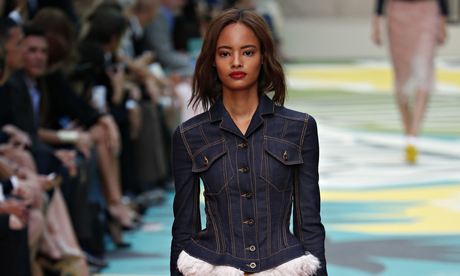
Autumn in London is always a celebration of creativity. Over the last month, we’ve had the glitz and glamour of Fashion Week and the eye-popping gallery of fun that is the London Design Festival. Before long, many of us will be soaking up the artsy offerings at Frieze.
But what lends this year’s design smorgasbord a flavour of its own is tech, and nowhere is it more in evidence than in the thrilling collaboration between designers and the digital community.
Fashion Week saw big labels fall over each other to flaunt their tech credentials. Burberry launched a sleek click-to-buy option on Twitter, while Top Shop staged unprecedented tie-ins with Instagram and Facebook in its latest bid to woo the digital generation.
Wearable technology, no longer fashion’s ugly duckling, is lighting up the catwalk. A fibre-optic gown that glows in the dark? Beautiful jewellery that connects to your smartphone via Bluetooth? These are just a taste of what can be produced when the two industries collide.
Like so many pioneering movements in fashion and design, it’s all taking shape in London and the UK, rather than New York and Paris. And this mash-up of style and tech is just what you’d expect from the country that invented the sixties, then came up with punk, rave and countless cultural creative waves ever since.
Sitting in our bustling co-working space at Central Working, I can count as many design companies as tech businesses. Computer programmers, art and fashion college graduates and self-taught entrepreneurs mix in an invigorating, international mélange that so defines Britain in 2014.
The sheer concentration of design-led tech businesses in London, such as Lyst, Made.com and Secret Sales, combined with the tech clusters that attract investment from all over the UK, provides fertile ground for adventurous designers looking to innovate.
Britain’s cross-pollination of the aesthetic and the engineered is one of its strongest playing cards – the rich mix needed to design the way humanity lives, works and plays in the future.
Tech inventors need designers to make their products appeal to today’s style-conscious consumer. London, long a world-class hub for global design talent, is poised to be a major player in this market. Small wonder that heavy-hitting tech brands look to the UK when shopping for style-makers.
Earlier this year, Google asked the London-based designers behind Ray-Ban to dream up a more fetching version of Google Glasses. And Apple’s design team, headed up by British designer Sir Jonathan Ive, looked to London-based Marc Newsom to design its Apple Watch.
Of course, the potential for collaboration between tech and design extends far beyond the purely commercial. As the internet of things gathers momentum, technology will not only be built into the products we carry and wear. It will also underpin our nation’s very infrastructure.
Architects, manufacturers and city planners will increasingly team up with tech and software designers to integrate app iconography visual language, data visualization tools and other user-led design principles into our homes, offices, factories and cities.
Integral to this broader trend is the little-known field of experience design – yet another example of aesthetics colliding with technology. Experience design is increasingly shaping the way we interact with the world around us. Here again Britain is forging a path.
Experience-design tech companies, such as London-based Foolproof, plot and create the digital journey each of us embarks upon the minute we pick up a gadget.
This exciting new breed of techie draws on hard data to come up with the best possible digital experience. A host of British companies are laying claim to this fast-growing area of expertise, from Shoreditch-based Made by Many, Seren, ThoughtWorks and Tobias & Tobias, to Clearleft in Brighton and Bristol-based CX Partners.
Today, Britain’s creative industries contribute some 6% of GDP and employ more than 2 million people. Tech, meanwhile, is growing fast. A recent Tech City UK Pulse survey found that about 80% of of digital businesses plan to employ more people over the next 12 months.
We’re evolving and sowing fresh seeds all the time. Our National Tech Cluster Alliance, set up to improve collaboration across the country, is widening the tech spotlight to take in the whole of the UK.
When it comes to educating our next generation of homegrown techies and designers, Britain is also setting the pace. Earlier this month, computer skills went on the curriculum at primary schools all over the country. Children from five to 16 are learning the coding techniques that will help turn them into creators.
It’s never been a better time to innovate in design and technology. And those doing it here in Britain will feel the extra frisson of being part of a national wave of creativity – the latest in a long-running series that has made our country so great.
Gerard Grech is CEO of Tech City UK. You can follow him on Twitter @gerardgrech
To get weekly news analysis, job alerts and event notifications direct to your inbox, sign up free for Media Network membership.
All Guardian Media Network content is editorially independent except for pieces labelled ‘Advertisement feature’. Find out more here.

